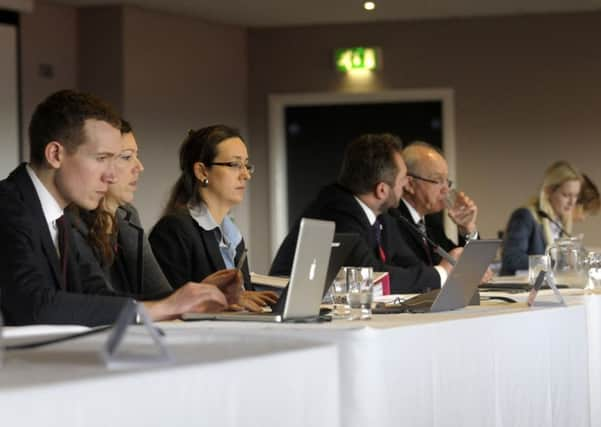Lancashire public set to gets an extra say on fracking


The inquiry into gas exploration company Cuadrilla’s appeal against two refused applications to drill and test frack for gas at Roseacre Wood and Preston New Road has entered its second week at Blackpool FC’s Bloomfield Road stadium.
People with an interest in the Roseacre Wood bid were due to have their say in front of planning inspector Wendy McKay tonight from 6.30pm and those wanting to speak about the Preston New Road site are due to speak on February 25.
Advertisement
Hide AdAdvertisement
Hide AdBut now the inspector confirmed an extra date has been set aside, on March 8, from 5.30 to 9.30pm, three days before the inquiry is due to end.
Protesters were absent outside Blackpool FC’s ground yesterday but about 20 members of the public were present to hear Cuadrilla’s expert witness on landscaping being cross-examined.
Andrew Tempany was quizzed by Robin Green, counsel for the Roseacre Awareness Group about the visual effects a fracking operation at Roseacre Wood would have.
He asked: “In the worst case scenario the site would have three rigs, a sand silo and a 10m high gas flare. Is that correct?
Mr Tempany answered: “Yes.”
Advertisement
Hide AdAdvertisement
Hide AdHe then asked if lighting would be 24 hours through the exploration phase and Mr Tempany confirmed that it would be through the exploration phase.
Mr Green went on to ask if anything in Cuadrilla’s evidence document showed the effects of the lighting on anything other than on the drilling rig.
He said: “There is no assessment at all as far as I can see on the effect of lighting on the landscape character.”
Mr Tempany replied: “No, not on landscape character.”
Mr Green suggested that the night time lighting would not only itself have an adverse effect on the area but also the lighting of the equipment on site would change the nature of the area.
Advertisement
Hide AdAdvertisement
Hide AdHe went on to suggest that the equipment itself would change the nature of the rural area.
Mr Tempany said there were already other man-made elements in the area such as telegraph wires, pylons and the communications masts at the Inskip defence establishment.
But Mr Green said that a 53m high drilling rig, a service rig at 36m and a sand silo would be the dominant feature of the landscape.
Inspector Wendy McKay asked Mr Tempany about the difference in visual effect of having a shorter 36m high drill rig rather than the 53m high rig. She said he had said previously it would only have a marginal effect.
Advertisement
Hide AdAdvertisement
Hide AdShe asked: “Can you give some idea of what height it would have to be to not have an adverse effect visually?”
He replied: “It would need to be something much more in scale with other landscape features, something in order of 20s in terms metre height.”
She then asked how effective the proposed planting of trees around the site to hid the development would be.
He said: “I accept the benefits would be limited given the time.
Advertisement
Hide AdAdvertisement
Hide Ad“It would still be helpful at securing integration at ground level but limited at how much it would grow and limit the appearance of the site.”
Next to give evidence was Cuadrilla’s transport witness Johnny Ojeil of Arup.Under qustioning from Natthalie Whelan, Cuadrilla’s own counsel, he outlined the routes trucks would take to and from the site and their numbers.
He said that a proposed alternative route from Junction 1 of the M55 via Broughton and Woodplumpton had been withdrawn to show goodwill following council objections and the preferred route would go via the MOD site at Inskip when peak truck movements were happening and through Wharles when that dropped to two vehicles a day.
He said that at the busiest times 25 HGVs would go too and from the site a day and a traffic management plan would strictly control trucks.
He said a large layby on the A585 could be used as a holding bay for the HGVs until given clearance to proceed to the site.
Passing places would also be constructed on the rural roads.